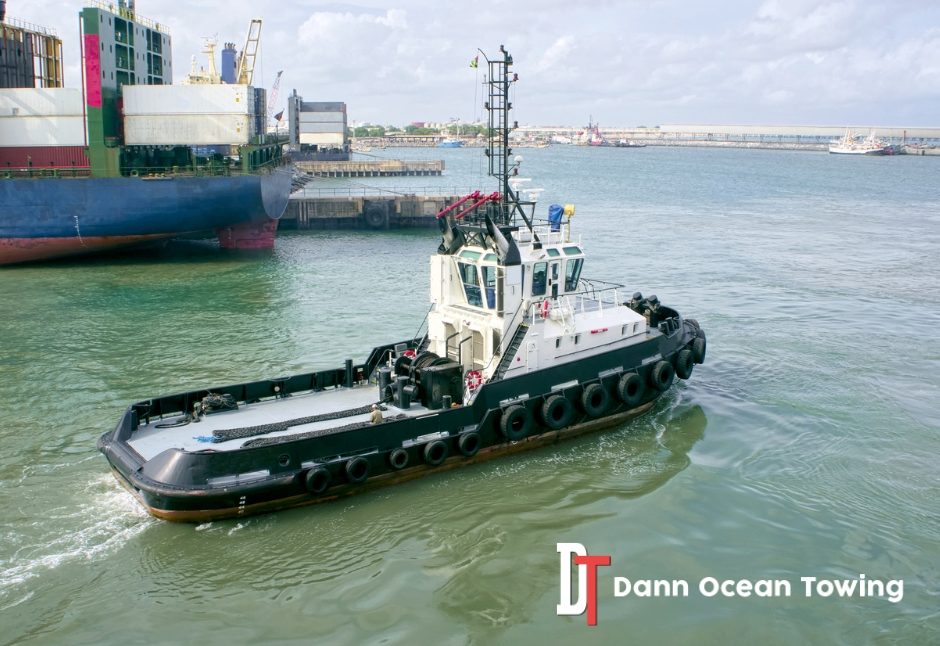What is the towing procedure for tugboats?
Tugboats often play a pivotal role in the movement of ships and other vessels. These boats are invaluable for facilitating barge towing and assisting larger vessels in navigating through tight spaces. Tugboats can often perform a variety of activities, whether it’s moving cargo, acting as a salvage boat, carrying firefighting equipment for emergencies, or much more. Understanding the towing procedure for a tugboat that’s moving cargo is always a good idea if you are ever considering using these services.
Here is an overview of the steps involved in how tugboats move cargo:
Pre-towing Preparation
Before any towing operation, a thorough pre-towing assessment is necessary. This includes:
- A detailed risk assessment, considering factors such as weather, sea conditions, and the physical condition of the vessels involved.
- A comprehensive pre-towing plan that outlines the towing procedure, including the towing gear setup, communication protocols, and emergency response plans.
- A thorough inspection of the towing gear to make sure it’s in excellent condition and meets safety standards.
Towage Connection and Rigging
Once the pre-towing preparation is complete, the next step involves connecting the tugboat to the vessel it will be towing.
This process involves the following steps:
- Positioning the tugboat and the towed vessel correctly to ensure that both are stable and securely fastened.
- Choosing the appropriate towing gear, such as towlines, shackles, and tow bridles, based on the size and type of the vessels involved.
- Connecting the towing gear and making sure all components are secure and properly adjusted to avoid undue stress on the gear during the towing operation.
- Testing the connection and the towing gear to ensure they can withstand the forces that will be exerted during the towing operation.
Communication Protocols
Establishing communication channels between the tugboat and the towed vessel is crucial for the safety of the towing operation. This includes:
- Setting up communication systems such as VHF radios, walkie-talkies, or other means of direct communication between both vessels.
- Regularly updating the towed vessel on the tugboat’s position, speed, and course, as well as any changes in environmental conditions or other factors that may affect the towing operation.
Towing Operations
Once the towing gear is rigged and communication protocols are in place, the towing operation can begin. Key aspects of the towing procedure for a tugboat include:
- Slowly increasing the speed of the tugboat while maintaining a steady and controlled force on the towline.
- Constantly monitoring the tension on the towline and adjusting the tugboat’s speed accordingly to avoid jerking or snapping the line.
- Regularly checking the towing gear to make sure it stays secure and in good condition throughout the operation.
- Continuously communicating with the towed vessel, updating them on the tugboat’s position and any changes in course or speed.
Navigating Challenging Environments
Tugboats often have to navigate challenging environments, such as crowded harbors or narrow waterways, to safely tow vessels. Some tips for navigating these environments include:
- Planning the route in advance, taking into account any potential obstacles.
- Using the tugboat’s powerful engines and maneuverability to maintain control of the towed vessel.
- Employing the assistance of additional tugboats if necessary.
Disconnecting and Securing the Vessels
Once the towing operation is complete and the towed vessel has reached its destination, the tugboat must safely disconnect and secure the vessel. This process involves:
- Reducing the speed of the tugboat and the towed vessel gradually for a controlled stop.
- Communicating with the towed vessel to coordinate the disconnection process and ensure both vessels are ready for the towline to be released.
- Disconnecting the towing gear, starting with the towline, and carefully releasing any tension to avoid damage or injury.
- Inspecting the towing gear for any signs of wear or damage and storing it properly for future use.
Want to Learn More About the Towing Procedure for a Tugboat? Contact Dann Ocean Towing!
Dann Ocean Towing offers marine towing and barge towing services for many customers. We also provide many other services, such as marine construction, anchor handling, ocean towing, rescue towing, and much more. Our experienced team understands that the towing procedure for a tugboat is a complex process that requires careful planning and precise execution.
Reach out to Dann Ocean today to learn more tips about towing procedures for tugboats!


